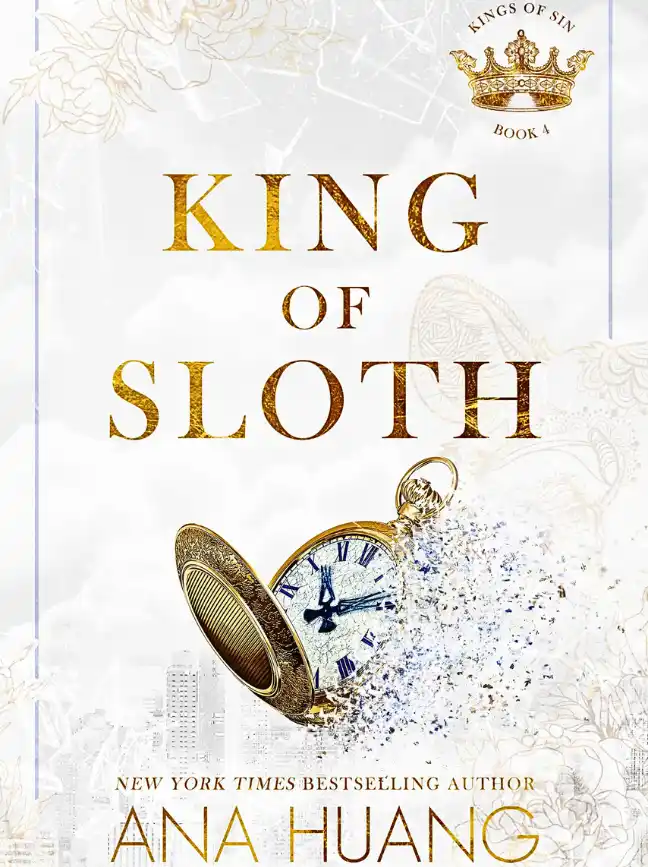By the end of World War II, a third of Milan lay in ruins. The bombardment and the fighting had left twenty-two hundred Milanese dead and four hundred thousand homeless.
The city and its people began to rebuild, burying the past and the rubble under new roads, parks, and high-rise structures. They cleaned the soot of war off the Duomo. They put up a monument to Tullio Galimberti and the martyrs of Piazzale Loreto around the corner from a bank that used to be Beltramini’s Fresh Fruits and Vegetables. The Hotel Diana still stands, as do the chancellery, San Vittore Prison, and the haunted colonnades of the Cimitero Monumentale.
The towers of Castello Sforezsco were repaired, but bullet marks remain on the inner walls. In an effort to forget the savagery that occurred in the Piazzale Loreto, the Esso station was torn down. So was the building that once housed the Hotel Regina and the Gestapo. A plaque on Via Silvio Pellico is all that memorializes the people murdered and tortured inside SS headquarters. Milan’s Holocaust Memorial is inside the central train station, beneath Platform 21.
Of the roughly forty-nine thousand Jews in Italy at the time of the Nazi invasion, some forty-one thousand evaded arrest or survived the concentration camps. Many were put on the Catholic underground railroad that ran north along several different routes into Switzerland, including Motta. Others were helped by courageous Italians, Catholics, and clergy who hid Jewish refugees in the basements of monasteries, convents, churches, homes, and even a handful in the Vatican.
Alfredo Ildefonso Schuster, who fought to save Jews and his city from further destruction, remained the cardinal of Milan until his death in August 1954. A future pope said Cardinal Schuster’s funeral Mass. One of his
pallbearers took up his cause for sainthood. That pallbearer became Pope John Paul II, who beatified Cardinal Schuster in 1996. His blessed body lies in a sealed glass case beneath the Duomo.
Father Luigi Re continued to offer Casa Alpina as sanctuary to people in danger. In the days following the end of World War II, he infamously protected Eugen Dollmann, Hitler’s Italian translator, and refused demands from the US Army to hand him over.
Father Re was named to the “Righteous Among the Nations,” an honor given by Yad Vashem, the Israeli World Holocaust remembrance center, to those who selflessly risked their own lives to save Jews. Father Re died in 1965 and is entombed on the ski slopes above Motta, beneath a golden-plated statue of the Madonna said to have been paid for by all the people he’d helped before, during, and after the war. His boys’ school has since been rebuilt as a hotel named Casa Alpina. His chapel is gone.
The seminarian Giovanni Barbareschi was honored for his heroic actions during the Italian resistance, named to the Righteous Among the Nations, and ordained by Cardinal Schuster. After a long career as a priest, he retired and still lives in Milan, where he keeps a collection of his old forging tools.
Alberto Ascari, who taught Pino Lella to drive, went on to live his childhood dreams and became an Italian national hero. At the wheel of a Ferrari, Ascari won the World Grand Prix Championships in 1952 and 1953. In May 1955, while he was taking training laps on the Monza circuit, his car somersaulted and crashed, hurling Ascari onto the racetrack. He died in Mimo Lella’s arms. Thousands of people crowded the Duomo and the piazza the day of Ascari’s funeral. Buried next to his father in the Cimitero Monumentale, Ascari is widely considered one of the greatest race car drivers of all time.
Colonel Walter Rauff, the head of the Gestapo in northern Italy, was believed to be directly responsible for the deaths of more than one hundred thousand people, and indirectly responsible for the hundreds of thousands who died in the portable gas chamber he designed and deployed in eastern Europe before his transfer to Milan. Rauff was captured, but broke out of a prisoner of war camp and ended up in Chile as a shadowy spy-for-hire who became close to the country’s dictators.
Simon Wiesenthal, the famous Nazi hunter, tracked Rauff down in 1962. The German government tried to have Rauff extradited. He fought it,
and the case went to the Chilean Supreme Court. Rauff was freed five months later. He died in Santiago in 1984 of a heart attack. Attended by many former Nazi officers, his funeral was described as a raucous celebration of Rauff, Adolf Hitler, and the Third Reich in general.
Major J. Frank Knebel returned to the United States, left the army, and picked up his life in newspaper journalism. He was the publisher of the Garden Grove News in California and later the Ojai Valley News. In 1963, he bought the Los Banos Enterprise. Knebel and Pino corresponded on and off until the newspaperman’s death in 1973. Knebel left behind little about the war except for a cryptic note in one of his files that alluded to his plans to write a “never-before-told true story of great intrigue in the last days of the war in Milan.” He never did.
Corporal Peter Daloia returned to Boston. When he died decades after the war ended, his son was shocked to find a Silver Star for valor for his father’s heroics at the battle of Monte Cassino. It was buried in a box in the attic. Typical of so many, Daloia told no one about his war in Italy.
Albert and Greta Albanese continued to flourish in business. They made a fortune when Uncle Albert decided to wrap meerschaum pipes in leather and sell them around the world. They died in the 1980s. Their shop at #7 Via Pietro Verri is now Pisa Orologeria, or Pisa Luxury Watches.
Michele and Porzia Lella ran a series of successful purse and sportswear companies after the war and were active in the fashion district their entire lives. Before their deaths in the 1970s, #3 Via Monte Napoleone, the site of the original purse store, was rebuilt and now houses a Salvatore Ferragamo boutique. The apartment building on Corso Matteotti still stands, though the birdcage elevator has been removed.
Pino’s sister, Cicci, became as dynamic a businesswoman as her mother. She promoted Milan as a global fashion center and worked in the family business, focusing on the boutiques in San Babila. She died in 1985.
Domenico “Mimo” Lella was cited for courage fighting for the resistance, most notably for his actions on the first day of the general insurrection. Mimo worked in the family business before founding his own manufacturing company, Lella Sport, which catered to the weekend athlete and outdoor enthusiast. A short, pugnacious, and successful businessman, Mimo married a beautiful fashion model, Valeria, who stood a foot taller than him. They had three children. He built a cabin at Motta beside Casa
Alpina that was said to be his favorite place on earth. In 1974, at age forty- seven, Mimo died of skin cancer.
Carletto Beltramini and Pino Lella were lifelong friends. Carletto became a successful salesman for Alfa Romeo and lived all over Europe. He never married and did not talk about the war for fifty-three years. But in 1998, as he lay ill in the hospital, Pino and an American named Robert Dehlendorf paid him a visit. Carletto recounted the last days of the war almost as a confession. He remembered the wild party at the Hotel Diana and the vengeful look on Pino’s face when he learned they were taking General Leyers to Austria. Carletto remained convinced that Leyers carried gold in his suitcase. He also admitted shooting the highwaymen as they tried to get away, broke down sobbing, and asked God’s forgiveness for the insanity of his acts.
Carletto died a few days later with Pino at his side.
After watching General Leyers drive away into Austria, Pino made it back to Milan and became Major Knebel’s guide in Italy for two weeks. The major refused to discuss Leyers, saying that those matters were top secret and the war was over.
But it wasn’t over for Pino. He was ravaged by grief and memory, his faith in constant peril, and dogged by questions no one could answer. Had General Leyers known Pino was a spy all along? Had everything he’d seen and heard while in Leyers’s company been deliberately shown to him so he could report to Uncle Albert and to the Allies through Baka’s radio?
Uncle Albert claimed to have been as surprised as Pino that Leyers had known his code name. His uncle and his parents were more concerned that Pino was still a target for reprisal. Their fears were justified. By the end of May 1945, thousands of Fascists and Nazi collaborators lost their lives in executions and vendetta killings across northern Italy.
At his family’s urging, Pino left Milan for Rapallo. He worked at odd jobs in the coastal town until late in the fall of that year. Then he returned to Madesimo, where he taught skiing and tried to come to terms with his tragedy in long discussions with Father Re. They talked of love. They talked of faith. They spoke of the crushing weight of their loss.
Pino prayed for help in the mountains, for relief from the constant grief and confusion and sadness. But Anna would not leave him. She was the memory of the best moments of his life—her smile, her smell, and the music of her laughter that kept playing in his ears. She was a damning force that swirled around him in the dark of night, accusatory, bitter, and demanding.
Someone tell them I’m just a maid.
Pino lived for more than two years in the dull haze of guilt and grief, blind to any kind of future, deaf to any words of hope. He walked for kilometers along the beaches in the summers, and he climbed in the Alps in the autumns before the snow fell in the cathedrals of God, and begged daily for forgiveness that never came. With every day that passed, though, Pino still believed that someone would come and ask him about General Leyers.
But no one did. Returning to Rapallo for a third summer in 1947, Pino was still trying to come to grips with his war experience, and still trying to deal with Anna’s ghost. He grieved the fact that she never told him her surname, or her married name, for that matter. He couldn’t even try to find her mother to tell her that her daughter had died.
It was as if Anna had never existed for anyone but him. She’d loved him, but he’d failed her. He’d been put in an impossible situation, and through his silence, he had denied knowing her, denied loving her. He’d had faith and been selfless in the Alps guiding the Jewish refugees and in his life as a spy, but he had been faithless and self-serving when faced with the firing squad.
The mental torture went on and on until, on one of those long beach walks where Anna still lived in his mind, Pino remembered her telling him that she didn’t believe much in the future, that she tried to live moment by moment, looking for reasons to be grateful, trying to create her own happiness and grace, and to use them as a means to a good life in the present and not a goal to be achieved some other day.
Anna’s words rang in Pino’s head, and for some reason, after all that time, they clicked and unlocked him somehow, made him admit he wanted more than to pine for her and to feel gutted for not trying to save her.
On that deserted beach, he ached for Anna one last time. But in his mind, his memories were not of her death, nor of her lifeless body on the colonnade floor, nor of the clown’s aria that taunted him in his faithless hours.
Instead, he heard Prince Calaf’s aria, “Nessun Dorma,” “None Shall Sleep,” playing in his head, and recalled snapshots of their strange falling in love: Anna outside the bakery the first day of the bombardment; Anna disappearing behind the trolley; Anna opening Dolly’s front door a year and a half later; Anna catching him in Dolly’s room with the general’s key; Anna taking his picture in the park by Lake Como; Anna acting drunk in front of the sentries on Christmas Eve; Anna naked and wanting him.
Hearing “None Shall Sleep” swell toward its crescendo, Pino looked out at the Ligurian Sea, and he thanked God for having had Anna in his life, even for so short and tragic a time.
“I still love her,” he told the wind and the sea where she’d been happiest. “I’m grateful for her. She was a gift that I’ll always treasure in my heart.”
Over the course of several hours, Pino felt the iron grip her spirit had on him ease, slip, and float away. When he left the beach, Pino vowed to put the war behind him, to never think again about Anna, General Leyers, Dolly, or the things he’d seen.
He would pursue happiness above all, and he would do so con smania.
Pino returned to Milan and for a time tried to find that happiness and passion by working for his parents. His gregarious personality returned, and he was a fine salesman. But Pino was restless in the city and happiest in the cathedrals of God, on foot and on skis. His alpine talents brought him in a roundabout way to become a coach and interpreter with the Italian National Ski Team that went to Aspen, Colorado, in 1950 for the first postwar world championships.
Pino went to New York first, and listened to jazz in a smoky nightclub and saw Licia Albanese, his cousin, sing soprano in Madama Butterfly under Toscanini’s direction at the New York Metropolitan Opera.
His first night in Aspen found him striking up a conversation and drinking with two men he met by chance in a bar. Gary was from Montana, and an avid skier. Hem had skied in Italy at Val Gardena, one of Pino’s favorite mountains.
Gary turned out to be the actor Gary Cooper, who tried to convince Pino to go to Hollywood for a screen test. Hem turned out to be Ernest
Hemingway, who drank a lot and said little. Cooper ended up being a longtime friend of Pino’s. Hemingway did not.
When the ski team returned to Italy, Pino wasn’t with them. He went to Los Angeles but never took the screen test. The idea of millions of people scrutinizing his every move was unappealing, and he doubted he could remember lines.
Instead, through his friendship with Alberto Ascari, he got a job at International Motors in Beverly Hills, selling Ferraris and other luxury sports cars. Pino’s fluent English, his understanding of high-performance cars, and his love of fun made him a natural.
His favorite sales tactic was to take one of his Ferraris and park it at a lunch stand across the street from Warner Bros. He met James Dean that way, and claimed to have warned the young actor away from the Porsche he wanted to buy, telling Dean he wasn’t ready for the power of it. He was crushed when Dean didn’t listen.
At International Motors, Pino worked with mechanics Dan Gurney, Richie Ginther, and Phil Hill, local Santa Monica boys who became Formula 1 drivers. In 1952, Hill started racing for Ferrari after Pino introduced him to Alberto Ascari at Le Mans. Like Ascari, Hill would go on to become world champion.
In the winters, Pino traveled to Mammoth Mountain in the central Sierra Nevada and joined the ski school there. On the slopes, teaching, he found his greatest happiness and passion in life. He taught skiing as a form of joyful fun and creative adventure. Dave McCoy, Mammoth’s founder, said seeing Pino on skis in deep powder snow was “like watching a dream.” Pino was soon so popular that the only way to hire him was privately, which led to his friendship with Lance Reventlow, the son of Barbara Hutton—the Poor Little Rich Girl—and to a blind date with Patricia McDowell, the heiress to a newspaper fortune her family made with the Los
Angeles Daily Journal, the San Diego Times, and the San Bernardino Sun.
After a whirlwind courtship, Pino and Patricia married, bought a home in Beverly Hills, and led a jet-set life, splitting time between California and Italy. Pino no longer sold Ferraris. He owned them and raced them on sports car circuits. He skied. He mountain climbed. He lived a vigorous life and was genuinely happy, day after day, for years.
Pino and Patricia had three children, Michael, Bruce, and Jamie. He doted on the children and taught them to ski and love the mountains. And
he was always the life of the party that seemed to trail Pino no matter where they were in the world.
But every once in a while, late at night, often outside, he’d have memories of Anna and General Leyers, and they would all fill him once again with melancholy, confusion, and loss.
In the 1960s, when Pino was in his midthirties, he and Patricia began to fight. He thought she drank too much. She thought he paid too much attention to other women, and chided him for never making much of himself beyond being a world-class ski instructor.
In that toxic environment, Pino thought more and more of Anna, and grew ever more restless at the thought that he might never know a love as deep and as true again in his lifetime. He felt caged and with it the overwhelming need to walk, to move, to roam, to search.
A year of travel ended in Pino’s asking his wife for a divorce. He’d met an exotic, stunningly beautiful young woman named Yvonne Winsser, who was related to the Suharto family in Indonesia. Pino was smitten the moment they met. The divorce and remarriage hit Pino’s first family hard. Patricia descended into alcoholism. Pino sent the boys off to a Swiss boarding school. They were angry with him for years.
When Pino’s parents died, he inherited a third of the family business, which caused a rift between him and his sister. Cicci resented the fact that while he’d been off living a life in pursuit of happiness, she’d been working to build the Lella brand, and that he was now taking a third of the profits for doing next to nothing.
The money gave Pino even more freedom, but for many years that desire to roam wasn’t there. He and Yvonne had two children, Jogi and Elena. And he tried to be a better father to his older kids, with whom he reconciled.
After Mimo’s death, however, the old restlessness returned. And he started having dreams and nightmares of Anna. Pino took off on a trip that was supposed to begin in Paris, on a Pan Am jet bound for New York. But Carletto Beltramini, who was based in Paris, talked Pino into delaying his departure by a day so they could catch up. Pino did, only to learn that his
original flight, Pan Am Flight 103, went down over Lockerbie, Scotland, killing everyone aboard.
Pino was gone for months that time, traveling, looking, and not really understanding what he was searching for. When he returned, after thirteen years of marriage, Yvonne decided that while she loved him, she couldn’t live with him anymore. Oddly, though divorced, they stayed the best of friends.
Pino aged. He watched his children grow and his bank account dwindle, but he remained in remarkably good spirits through his sixties. He skied. He wrote about motor sports for several Italian publications. He had interesting friends and girlfriends. He never once spoke of Anna, or General Leyers, or Father Re, or Casa Alpina, or what he’d done in the war.
A researcher from the Altruistic Personality and Prosocial Behavior Institute at California’s Humboldt State University approached Pino in the 1980s. She was doing a study on people who had risked their lives to save others. She said she’d gotten his name through Yad Vashem, which was a surprise to Pino. He’d never been contacted by anyone regarding his activities with Father Re.
Pino spoke with the young woman briefly, but her study’s focus upset him, brought up memories of Anna that led him to end the interview with a promise to fill out her detailed questionnaire and return it to her. He never did.
Pino maintained his silence until the late 1990s, when he had a chance meeting in northern Italy with Robert Dehlendorf, a successful American who’d owned, among other things, a small ski area in California. Dehlendorf was retired and staying on Lake Maggiore.
The two men, roughly the same age, bonded. They ate. They talked. They laughed. Late the third night, Dehlendorf asked, “What was the war like for you, Pino?”
Pino got a faraway look in his eye, and after a long hesitation, said, “I’ve never told anyone about my war, Bob. But someone very wise once told me that by opening our hearts, revealing our scars, we are made human and flawed and whole. I guess I’m ready to be whole.”
Long into the night, fragments of the tale spilled out. Dehlendorf was stunned. How was it possible that so little of the story had ever been told?
That chance meeting between Dehlendorf and Pino led serendipitously and eventually to a dinner party in Bozeman, Montana—the evening of the lowest day of my life—and to my decision to fly to Italy to hear the story firsthand and in full. Pino was in his late seventies when I landed in Milan the first time. He had the cheer and vigor of someone twenty years younger. He drove like a maniac. He played beautiful piano.
When I left three weeks later, Pino looked much older than his age. Opening up a story he’d kept locked away for six decades had been traumatizing, and he remained haunted by a lifetime of unanswered questions, especially concerning General Hans Leyers. What had become of him? Why hadn’t he been charged with war crimes? Why had no one ever come to hear Pino’s side of the story?
It took nearly a decade of research on my part to give Pino Lella answers to some of his questions, largely because General Leyers had been so devastatingly good at burning his way out of history. So were other officers of the Organization Todt. Even though the Nazis were compulsive record keepers, and even though the OT had literally millions of prisoners and slaves under its command, the organization’s surviving documents would fill only three file cabinets.
General Leyers, who by his own admission had sat at the left hand of Adolf Hitler and who was arguably the second-most powerful man in Italy during the last two years of World War II, left behind fewer than one hundred pages from his time there. In most of those documents, his name is merely noted as a participant in one meeting or another. It is rare to see a paper where Leyers appears as a signatory.
However, from the documents that did survive, it is clear that after Pino delivered Leyers to paratroopers on the Brenner Pass, the general’s assets in Germany and Switzerland were frozen. Leyers was taken from the pass to an Allied prisoner of war camp outside Innsbruck. Strangely, no records of Leyers’s interrogation statements remain or have been made public, nor is he mentioned in the open proceedings of the Nuremberg war crimes trials.
The general did, however, write a report for the US Army on the Organization Todt’s activities in Italy. The report is on file in the US National Archives, and is, in short, a total whitewash of Leyers’s own actions.
In April 1947, twenty-three months after the end of the war, Hans Leyers was released from prison. Thirty-four years later, he died in Eischweiler, Germany. Those two dates were the only things about Leyers I was certain of for nearly nine years.
Then, in June 2015, while working with an excellent German researcher and translator named Sylvia Fritzsching, I tracked down General Leyers’s daughter, Ingrid Bruck, who was still living in Eischweiler. Though on her deathbed, Mrs. Bruck agreed to talk to me about her father and what had happened to him after the war.
“He was taken to the prisoner of war camp, awaiting his prosecution at Nuremberg,” she said, wan and sick in her bedroom in the sprawling German manor she had inherited from her parents. “He was charged with war crimes, but . . .”
Mrs. Bruck started coughing and got too sick to go on beyond that. But it turned out that General Leyers’s spiritual adviser of twenty-five years and his friend and aide of three decades were both available to explain the rest to me, or at least what Leyers had told them about his time in Italy and his miraculous release from the prisoner of war camp.
According to Georg Kashel and retired Reverend Valentin Schmidt of Eischweiler, General Leyers was indeed indicted for war crimes. They weren’t familiar with the specific charges, and they claimed to know nothing about Leyers’s taking slaves or participating in genocide through his implementation of “Vernichtung durch Arbeit,” the Nazi policy of “Extermination by Labor” that was part of Hitler’s final solution.
The reverend and the estate manager did agree, however, that Leyers was to be tried at Nuremberg along with other Nazis and Fascists who committed war crimes in Italy. A year and then two went by after the war’s
end. During that time, most of Hitler’s surviving henchmen were tried and hanged, many of them after being testified against by the führer’s Reich Minister for Armaments and War Production and the leader of the Organization Todt, Albert Speer.
At Nuremberg, Speer claimed he knew nothing about the concentration camps even though the Organization Todt built them, and even though many of the camps featured signs that identified them as OT work camps. Whether the Allied prosecutors actually believed Speer, or just valued the damning testimony he offered, the tribunal saved Hitler’s architect from the hangman’s noose.
After being told that Speer had turned on Hitler’s inner circle and sent them to the gallows, General Leyers cut his own deal with prosecutors. On his own behalf, Leyers provided evidence that, among other things, he had helped Jews escape Italy, he had protected high-ranking Catholics, including Cardinal Schuster, and he had saved the Fiat company from total destruction. The general also agreed to testify in closed court against his titular boss, Albert Speer. Based in part on evidence provided by Leyers, Hitler’s architect was ultimately convicted of taking slaves and sent to Spandau Prison for twenty years.
At least that’s how the minister and Leyers’s longtime aide told the story of why the general came to be released from a POW camp in April 1947.
Though the account was thoroughly plausible, the Leyers’ family legend was no doubt somewhat more complex. Less than two years after the war’s end, the world was sick of its aftermath and growing apathetic about the ongoing Nuremberg trials. There was also increasing political concern about the expanding power of Communism in Italy. The thinking went that a series of sensational trials against Fascists and Nazis would only play into pinko hands.
The “Missing Italian Nuremberg,” as historian Michele Battiti has called it, never happened. Nazis and Fascists who had committed unspeakable atrocities, including General Leyers, were simply allowed to walk in the spring and summer of 1947.
There was no trial for Leyers’s crimes. No assignment of blame for the slaves who died under his watch. All the evil and savagery done in northern Italy in the last two years of the war was kicked into a legal hole, buried, and forgotten.
Leyers returned to Düsseldorf with his wife, Hannelise; son, Hans-Jürgen; and daughter, Ingrid. During the war, the general’s wife had inherited Haus Palant, a medieval manor and estate in Eischweiler. It took six years of legal wrangling after the war for Leyers to regain full control of the sprawling property, but he did, and spent the rest of his life restoring and running it.
He started by rebuilding the large manor house and the barns, which ironically had been burned to the ground shortly before the war ended by Polish men taken slave by Organization Todt. Leyers’s minister and aide said he never spoke about the nearly twelve million people abducted by the Germans and forced into labor all over Europe.
Nor did they know where the general got the enormous sums of money required to rebuild his estate, other than to say that for years after the war he provided consulting work to various German supercompanies, including steelmaker Krupp and munitions manufacturer Flick.
Leyers, they said, had an incredible network of connections, and someone always seemed to owe him a favor. He would want something—a tractor, say—and, poof, someone would give him a tractor. It happened all the time. Fiat was said to be so grateful to Leyers that the company used to send him a new free car every other year.
Postwar life was good for Hans Leyers. As he had prophesied, things had gone his way before Adolf Hitler, during Adolf Hitler, and after Adolf Hitler.
Leyers was also a devout churchgoer after his release from the Allied prison camp. He paid for the construction of Eischweiler’s Church of the Resurrection, which is just a stroll down the lane from the estate on Hans- Leyers-Weg, a road named in the general’s memory.
Leyers was said to be the kind of man who “got things done,” and people, including his minister and aide, urged him to enter politics. The general refused, telling them he preferred to be “the man in the shadows, in the darkness, pulling the levers.” He never wanted to be the man out front.
As he turned elderly, Leyers watched his son grow up and earn a doctorate in engineering. His daughter married and had a family. He rarely
spoke of the war other than to boast at times that he never worked for Albert Speer, having always reported directly to Hitler.
Soon after the führer’s architect was released from Spandau Prison in 1966, Speer paid Leyers a visit. Speer was reportedly congenial at first, and then drunken and antagonistic, hinting that he knew the general had testified against him. Leyers threw Speer out of his house. When Leyers read Inside the Third Reich, Speer’s bestselling account of Hitler’s rise and fall, he became irate and called the entire account “one lie after another.”
After a period of declining health, General Leyers died in 1981. He is buried beneath a huge boulder in a cemetery between the church he built and the house where he lived, long after leaving young Pino Lella on the Brenner Pass.
“The man I knew was a good person, a man who stood against violence,” Reverend Schmidt said. “Leyers was an engineer who joined the army because it was a job. He wasn’t a member of the Nazi party. If he was involved in war crimes, I can only believe he was forced to be part of them. He must have had a gun to his head, no choice in the matter at all.”
A week after I learned all this, I paid Pino Lella one more visit on Lake Maggiore. He was eighty-nine by then, with a white beard, wire-rim glasses, and a stylish black beret. As always, he was affable, funny, and spry, living con smania, which was extraordinary, given that he’d had a recent motorcycle accident.
We went to a café he liked on the lakeshore in the town of Lesa where he lived. Over glasses of Chianti, I told Pino what had become of General Leyers. After I finished, he sat for a long time looking out at the water, his face rippling with emotions. Seventy years had passed. Seven decades of not knowing had ended.
Maybe it was the wine, or maybe I’d thought about his story for too long, but Pino at that moment seemed to me like a portal into a long-ago world where the ghosts of war and courage, the demons of hatred and inhumanity, and the arias of faith and love still played out within the good and decent soul who’d survived to tell the tale. Sitting there with Pino, recalling his story, I got the chills and thought again of how privileged I’d been, and how honored I was to have been vested with his tale.
“You’re sure about all this, my friend?” Pino asked finally.
“I’ve been to Leyers’s grave. I spoke to his daughter, and the minister he confessed to.”
Pino shook his head in disbelief finally, shrugged, and threw up his hands. “Mon général, he stayed in the shadows, he remained a phantom of my opera right to the end.”
Then he tossed his head back and laughed at the absurdity and unjustness of it.
After several moments of quiet, Pino said, “You know, my young friend, I will be ninety years old next year, and life is still a constant surprise to me. We never know what will happen next, what we will see, and what important person will come into our life, or what important person we will lose. Life is change, constant change, and unless we are lucky enough to find comedy in it, change is nearly always a drama, if not a tragedy. But after everything, and even when the skies turn scarlet and threatening, I still believe that if we are lucky enough to be alive, we must give thanks for the miracle of every moment of every day, no matter how flawed. And we must have faith in God, and in the Universe, and in a better tomorrow, even if that faith is not always deserved.”
“Pino Lella’s prescription for a long, happy life?” I said.
He laughed at that, and wagged his finger in the air. “The happy part of a long life, anyway. The song to be sung.”
Pino gazed north then, across the lake to his beloved Alps, rising like impossible cathedrals in the summer air. He drank from his Chianti. His eyes misted and unscrewed, and for a long time we sat in silence, and the old man was far, far away.
The lake water lapped against the retaining wall. A white pelican flapped by. A bicycle’s bell rang behind us, and the girl riding it laughed.
When at last he took off his glasses, the sun was setting, casting the lake in coppers and golds. He wiped away tears and put his glasses back on. Then he looked over, gave me a sad, sweet smile, and put his palm across his heart.
“Forgive an old man his memories,” Pino said. “Some loves never
die.”








